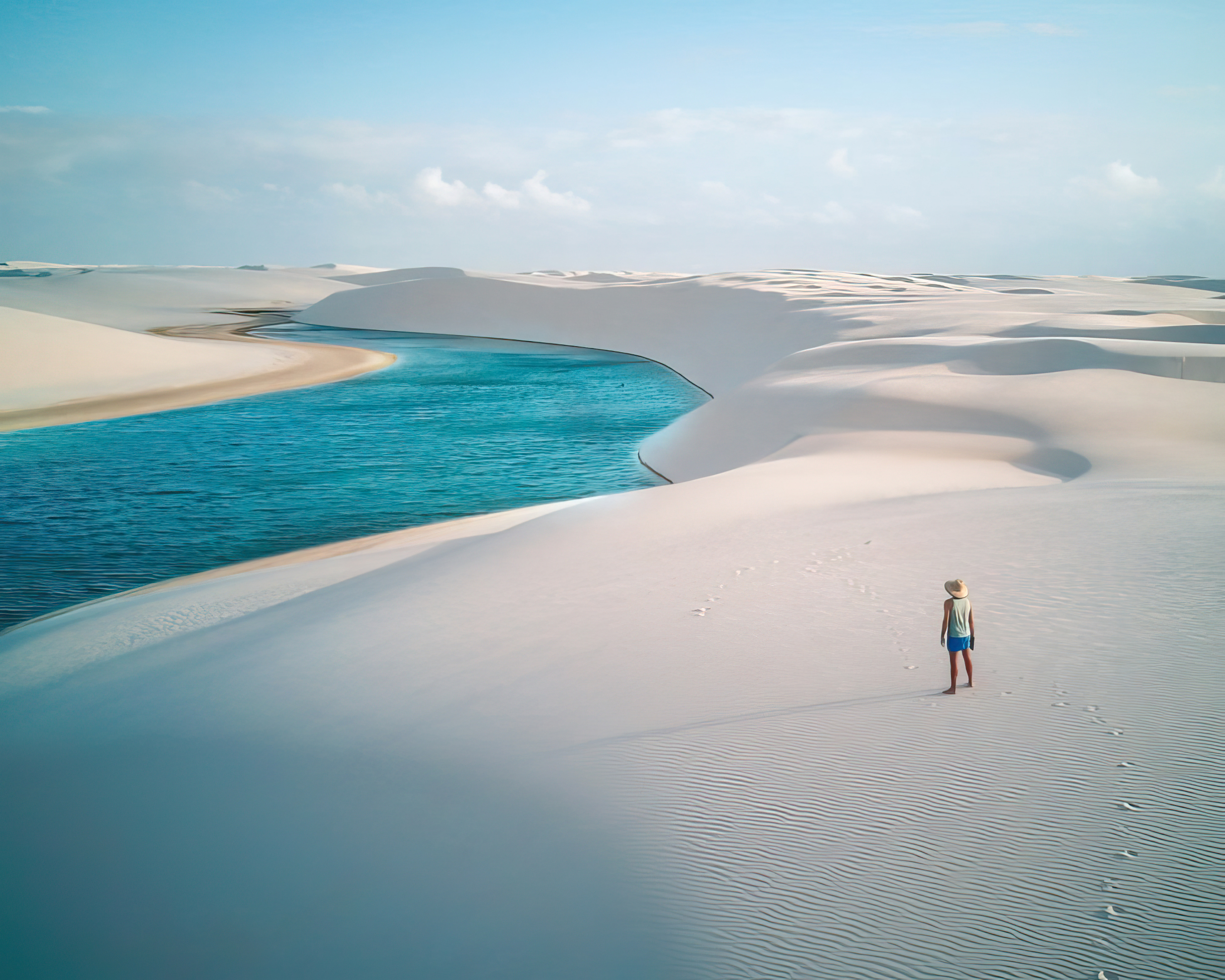Colours, Coast, Mountains & Capital of Brazil
Brazil
US$7,550
The coastal Lençóis Maranhenses National Park is stunning: characterised by fine white sand dunes whose valleys between are filled by deliciously turquoise lagoons – each one a perfectly enclosed tropical pool paradise. The water doesn’t filter through thanks to a layer of impermeable rock beneath.
Aqua-Firma can help you to explore Lençóis Maranhenses in several ways: drive across the dunes in a 4x4; ride over them on horseback; hike through the area; and swim in its freshwater lagoons. It is also possible to surf here as the onshore winds which sculpt the sand dunes also drive good waves off the beach.

Once you have managed to take in the magnificence of the landscape, we can take you to explore a surprisingly diverse ecology, both out on the dunes and amongst the mangroves and scattered bush.
One of the most striking animals here is the scarlet ibis, whose bright red plumage provides absolutely no camouflage against a habitat dominated by green, blue & white. The West Indian Manatee is a particularly endangered inhabitant; as well as the Neotropical Otter and secretive Oncilla: a beautiful and slender cat-sized version of a jaguar.
Fish and insects navigate the lagoons taking advantage of the plants in the area (of which there are over 130 species); countless bird and reptile species are also common to see here.
Contact Us about visiting Lençóis Maranhenses
There are three main set off points to explore Lençóis Maranhenses:
Atins is a small, coastal fishing village with a population of around 2,000. Whilst being fairly cut-off, this village does have an attractive selection of hotels, restaurants and bars, making it a comfortable place to make your base when visiting the national park. There is only a short distance of roughly 3 km (1.86 miles) between this town and the national park.
The larger Santo Amaro has a population of around 60,000 people and is located on the other side of the national park to Atins. This town is renowned for its historical buildings, of which one of its most iconic is the Parish Church of Our Lady of Purification, built in the 18th century. There is also a great cultural importance of this town as it is the centre to the African diasporic religion called Candomblé. Candomblé originated from a merging of several Central and West African beliefs with some Roman Catholicism. There are over 60 Candomblé temples in Santo Amaro.
Barreirinhas is the third option to access Lençóis Maranhenses. Barreirinhas is a town of just over 60,000 people near the north-east coast of Brazil, situated amongst white sand beaches which border the banks of the Preguiças River and mangrove forest. Markets and fabulous restaurants along the river give this town brilliant charm and make it a pleasant place to stay before you head to Lençóis Maranhenses National Park.